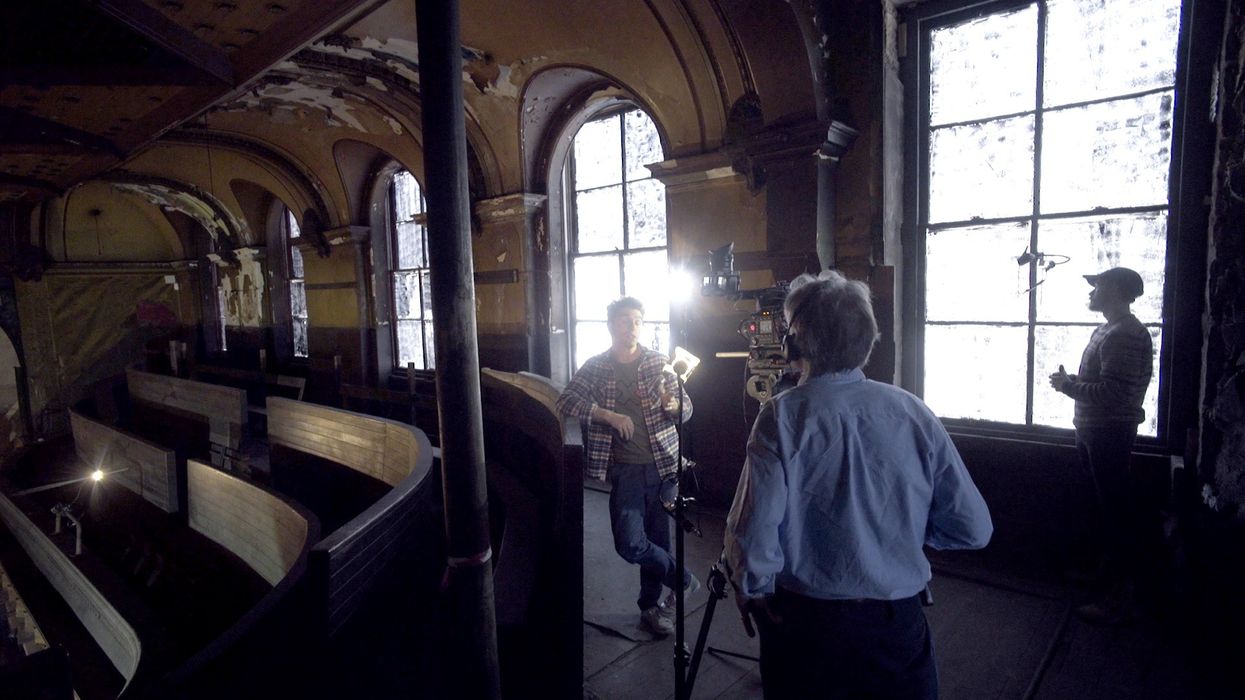Intro to Lighting: Terms, Techniques, and Concepts You Need to Know
If you need a good introduction to lighting for film, you'll definitely want to check this out.

Learning how to light a scene is important for many reasons: it exposes your images, adds atmosphere and tone, and increases production value if done well. But before you run off and try to do some super advanced Roger Deakins-grade stuff, you might want to get your feet wet with this primer on lighting from Blind Spot Gear, which gives you the basic terminology, techniques, and concepts you'll need to build a solid foundation.
Terminology you should know
If you're not very familiar with using pro lighting equipment, don't worry. Getting your hands on any old light is a great place to start practicing lighting a scene. Assuming you don't need help procuring a few desk lamps, clamp lights, or random little LEDs, you'll want to get familiar with the lighting terms that are used in filmmaking. Blind Spot Gear mentions quite a few, like practical lights, which are lights that appear within the frame (lamps, street lights, flashlights, etc.) and the principle lights: key (used to expose your shot), fill (to fill in shadows), and back light (to separate subject from the background).
Lighting Techniques: 3-Point Lighting
The key, fill, and back light form the trifecta that is 3-point lighting, the standard technique for lighting scenes. Though it's certainly not the only lighting method, it's definitely the most basic, accessible, and widely used one. In fact, it likley is (or will be) the first lighting setup you ever learned about. Check out this 3-point lighting diagram from Blind Spot Gear to get an idea of how it works.

Concepts: The Inverse Square Law
The final concept Blind Spot Gear talks about in the video is the Inverse Square Law. What is this and why is it important? Well, here's a definition:
The intensity of light or other linear waves radiating from a point source is inversely proportional to the square of the distance from the source; so an object (of the same size) twice as far away, receives only one-quarter the energy.
Take this scenario for example: You put an object a foot away from a light source on full power, then move the object two feet away from the light source. How much of the light's intensity will the object receive? Some would think, "Well, the object's distance from the light has doubled, so it receives only half of the light's intensity," but the Inverse Square Law says that it would only receive 1/4th of the intensity, because—math. (2²= 4, the inverse of 4 is 1/4)

Why is this important? Why is math important in filmmaking? (Why is math important at all?!) Well, because light falloff is important, and so is light placement, and they're directly related. The look of your entire scene could change dramatically simply by moving your light closer or further from your subject, because the light that reaches the foreground will be more intense than it will be in the background. The closer your subject is to the background, the more similarly they'll be exposed. The further your subject is from the background, the more underexposed the background will be (or overexposed your foreground will be).
So, there you have it—an introduction to lighting. What are some other key concepts, terms, and techniques you think novice filmmakers and cinematographers should know about? Let us know in the comments below.
Source: Blind Spot Gear











